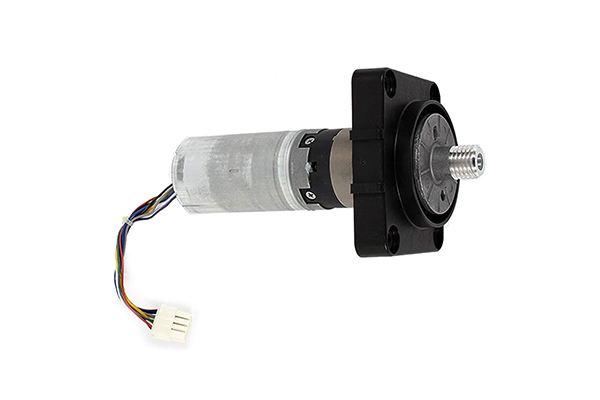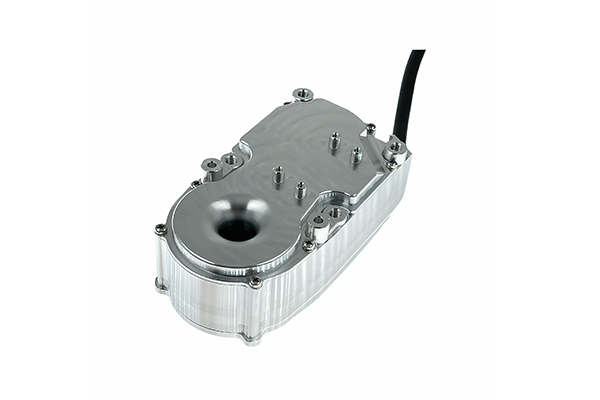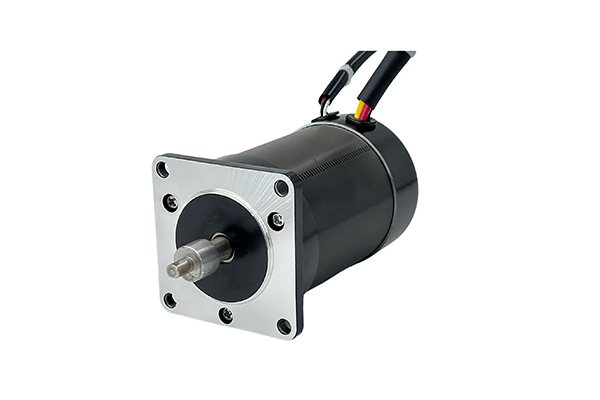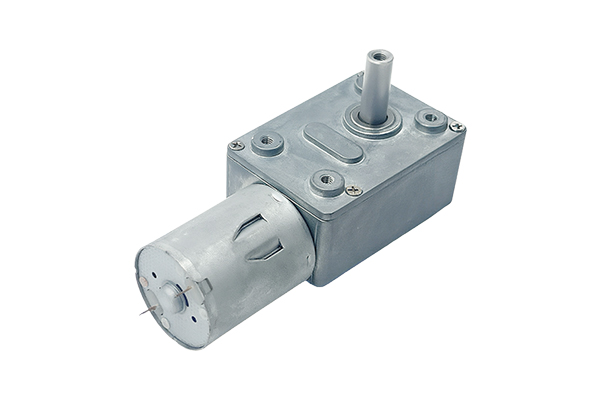Modern lawn mowing robots combine advanced mechanical precision with intelligent electronic control systems. Behind their silent movement across neatly trimmed grass lies a complex system of motors, each performing a specific and essential role — driving, steering, cutting, and lifting.
Understanding how these four motor types work individually and interact collectively is key for both design engineers and buyers seeking performance, durability, and efficiency. This article dives deep into each motor’s function, specifications, and contribution to the overall operation of autonomous lawn mowing robots.
Role of Motors in Robotic Lawn Mowers
Lawn mowing robots depend on a network of brushless DC (BLDC) motors that translate electrical energy from the battery into mechanical motion. Each motor type performs a distinct role:
| Motor Type | Primary Function | Typical Power Range | Control Method |
| Driving Motor | Provides traction and mobility | 30–100 W | PWM / FOC |
| Steering Motor | Controls navigation and direction | 10–40 W | Servo or BLDC |
| Cutting Motor | Powers the blades for grass cutting | 50–200 W | Speed-regulated BLDC |
| Lifting Motor | Adjusts cutting height dynamically | 5–20 W | Stepper or small DC motor |
These motors work in coordination under a central microcontroller that manages speed, torque, direction, and safety.

Driving Motor: Powering Movement Across Terrain
Function
The driving motor serves as the heart of mobility. It propels the mower forward or backward, often through a pair of independently controlled wheels. Each wheel typically has its own motor, enabling differential speed control — a crucial feature for turning and navigating complex garden layouts.
Technical Characteristics
Most robotic mowers use brushless DC motors with integrated gearboxes for the drive wheels. They offer exceptional efficiency, compact torque, and minimal maintenance.
| Parameter | Typical Value |
| Rated Voltage | 24 V DC |
| Continuous Torque | 0.8–2.5 Nm |
| No-load Speed | 200–300 RPM |
| Gear Ratio | 20:1 to 60:1 |
| Protection Class | IP54 or higher |
Performance Considerations
A well-designed driving motor must:
- Deliver sufficient torque to handle uneven or inclined terrain.
- Maintain energy efficiency for extended battery life.
- Offer smooth acceleration to protect delicate grass.
Brushless motors with field-oriented control (FOC) are increasingly popular because they allow precise torque regulation while minimizing power loss.

Steering Motor: Precision in Navigation
Function
In advanced lawn mowing robots, steering motors are responsible for directional control. Depending on the design, steering can be:
- Differential steering: Achieved by varying wheel speeds using dual driving motors.
- Dedicated steering system: A separate motor adjusts a front or rear wheel to change direction.
The latter design, although less common, is found in larger robotic mowers or those with autonomous path planning features.
Control and Design
The steering motor requires high responsiveness and fine angular accuracy, typically achieved through:
- Servo motors (compact and accurate for angle control).
- Stepper motors (for incremental, stable rotation control).
Specifications
| Parameter | Typical Range |
| Rated Voltage | 12–24 V |
| Torque | 0.3–1 Nm |
| Angular Range | ±30° or more |
| Control Signal | PWM / Step Pulse |
| Response Time | <100 ms |
Integration with Sensors
Steering motors are closely integrated with:
- Gyroscopes and accelerometers for orientation sensing.
- Encoders for angular position feedback.
- Obstacle detection sensors (e.g., ultrasonic or LiDAR) for path correction.
This synchronization ensures precise path tracking and minimal overlapping in mowing routes, reducing energy consumption and mowing time.

Cutting Motor: The Powerhouse Behind the Blades
Function
The cutting motor drives the mower’s rotating blades — arguably the most demanding application among all motor functions. It determines cutting quality, efficiency, and noise levels.
Design and Technology
Modern robotic mowers employ high-speed brushless motors with electronic speed control (ESC). The cutting system may involve:
- Single-blade disc design (lightweight, low power).
- Multi-blade design (for faster and thicker grass cutting).
To optimize efficiency, the motor’s speed is electronically regulated based on grass density and resistance feedback.
| Parameter | Typical Value |
| Rated Voltage | 24–36 V |
| Rated Speed | 3,000–6,000 RPM |
| Power Output | 80–200 W |
| Efficiency | >85% |
| Cooling | Passive / Air vents |
Key Performance Goals
- Torque stability: Must maintain constant torque when cutting thick or wet grass.
- Noise reduction: Achieved using dynamic balancing and optimized blade geometry.
- Durability: Designed with sealed bearings and corrosion-resistant housings.
Advanced Control
High-end models integrate load-sensing ESCs that automatically adjust motor speed to match resistance. This adaptive feature saves energy and prevents overheating — extending both motor and battery lifespan.

Lifting Motor: Adjusting Cutting Height
Function
The lifting motor is often overlooked but vital for user customization and adaptive mowing. It adjusts the blade’s vertical position, controlling cutting height (commonly between 20 mm to 60 mm).
Operation Mechanism
The lifting motor actuates a lead screw or gear mechanism to raise or lower the cutting deck. It typically uses a small stepper motor or micro DC motor with position feedback via potentiometers or encoders.
| Parameter | Typical Range |
| Rated Voltage | 12 V |
| Torque | 0.2–0.5 Nm |
| Travel Distance | 20–60 mm |
| Movement Speed | 3–6 mm/s |
| Feedback System | Potentiometer / Encoder |
Smart Height Control
Some robotic mowers automatically adjust cutting height based on:
- Terrain slope detection.
- Grass growth patterns (AI models).
- User preferences stored in the control app.
Such dynamic control allows optimal lawn health by avoiding scalping or excessive grass removal in a single pass.
Comparing the Four Motor Types
| Feature | Driving Motor | Steering Motor | Cutting Motor | Lifting Motor |
| Purpose | Movement & traction | Directional control | Blade rotation | Height adjustment |
| Motor Type | BLDC w/ gearbox | Servo / Stepper | High-speed BLDC | Micro Stepper / DC |
| Torque Demand | High | Medium | High | Low |
| Speed Range | 200–400 RPM | 0–90° rotation | 3,000–6,000 RPM | Slow linear |
| Duty Cycle | Continuous | Intermittent | Continuous | Occasional |
| Control Complexity | Moderate | High | High | Low |
| Maintenance | Low | Low | Medium | Low |
This comparison highlights how each motor fulfills a specialized mechanical demand within the mower’s system. While driving and cutting motors dominate power consumption, steering and lifting motors emphasize precision and control.
Power Management and Coordination
All four motor systems are governed by a central control board, typically equipped with:
- Microcontrollers or embedded processors (such as STM32 or ESP32).
- Electronic Speed Controllers (ESCs) for brushless motors.
- Motor drivers for steppers and servos.
The system monitors:
- Battery voltage
- Motor current draw
- Temperature
- Obstacle proximity
Smart algorithms distribute power dynamically, prioritizing drive and cut functions while conserving energy during idle or transit phases. This coordination ensures balanced performance and extended battery life.
Challenges in Motor Design for Lawn Mowing Robots
- Designing efficient motor systems involves multiple trade-offs:
Compactness vs. Power Output:
- Motors must fit within limited chassis space while delivering sufficient torque.
Efficiency vs. Cost:
- Brushless motors offer high efficiency but raise overall manufacturing cost.
Noise vs. Speed:
- Lower RPM reduces noise but may compromise blade efficiency.
Durability vs. Weight:
- Metal housings improve protection but increase total machine weight.
To mitigate these challenges, manufacturers adopt:
- Lightweight aluminum or polymer motor housings.
- IPX5–IPX7 waterproof ratings.
- Optimized thermal management (heat sinks, airflow channels).
Innovations and Trends in Robotic Mower Motors
The evolution of robotic mower motors follows advancements in electric vehicle micro-drives and industrial automation. Current trends include:
- High-efficiency rare-earth magnets (NdFeB) for compact torque generation.
- Integrated sensorless control that eliminates Hall sensors, simplifying design.
- AI-based terrain adaptation, where motor torque adjusts to slope and grass type.
- Regenerative braking in drive motors, recovering energy during downhill operation.
- Smart connectivity, allowing users to monitor motor load and wear via mobile apps.
In robotic lawn mowers, every motor — from the powerful cutting motor to the precise steering actuator — contributes to an orchestrated system of movement, control, and cutting performance.
- Driving motors ensure smooth, adaptive mobility.
- Steering motors handle navigation accuracy and turning precision.
- Cutting motors define the lawn’s visual finish.
- Lifting motors personalize the cutting height to user or environmental needs.
Understanding these distinctions is not only critical for engineers designing robotic systems but also for buyers comparing models based on performance, durability, and maintenance requirements.
